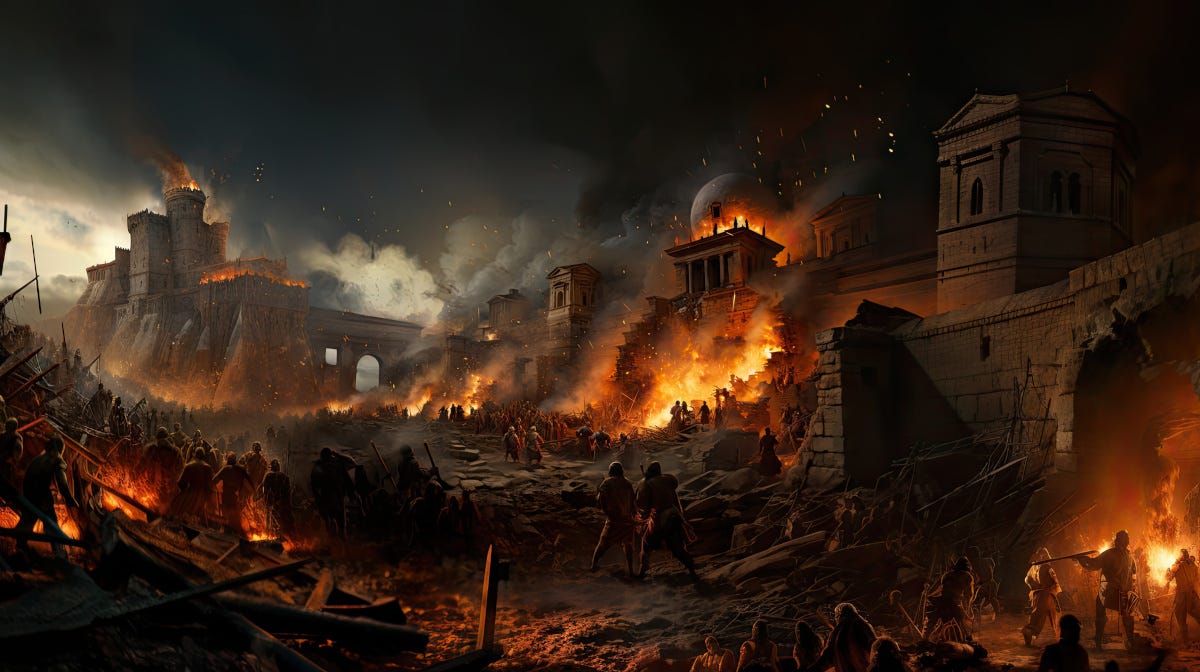Troy in Turkey or Troy in Britain? False Leads vs Hard Evidence
Premium Article
This article was originally published on Ancient Origins Premium (July 15, 2024).
By Anthony Adolph
Nobody reading Homer’s Iliad or Virgil’s Aeneid has ever failed to wonder ‘was this real?’ and ‘where was Troy?’. Homer’s Troy lay across the Aegean from Greece, whence the angry Greeks sailed to avenge the abduction of Helen. Since Homer’s time, Troy was known to have been near, if not below, the Roman city of Ilium, in the north-western tip of Anatolia (now Turkey), immediately south of the mouth of the Dardanelles. In his poem Civil War, Lucan describes Julius Caesar visiting Ilium, fascinated by the myths of Aeneas, who he believed to be his ancestor. Every rock had some myth attached to it. Once, says Lucan, Caesar walked into some tall grass and a peasant warned him to be careful, lest he trample on the ghost of Hector. Yet once the Roman Empire collapsed, Ilium fell into ruin and by the time the area was ruled by the Ottoman Empire, the city had vanished.
Educated travelers remained curious and, as their ships stopped off the coast, either deliberately or to wait for the wind to change, they explored in hope of finding Homer’s fabled city. Many people, unaware that the walls and archways of Alexander Troas, on the Trojan coast, were built by one of Alexander the Great’s generals, allowed themselves to believe that they were in Troy. In the 1790s, Jean Baptiste Lechevalier, claimed he had found Troy on the Balli Dağ, a dramatic hill on the southern edge of the Trojan plain, seven miles from the sea. His arguments were as unconvincing as those for Alexandria Troas and, from his lofty viewpoint in Cambridge, Jacob Bryant published two dissertations arguing that Homer was pure fiction, and Troy with all its heroes, including Aeneas, were mere fables.
Yet the power of myths continued to draw the curious. When Lord Byron and John Cam Hobhouse were travelling along the Anatolian coast in 1810, their ship anchored off the Trojan shore to wait for the weather to change. In the fourth canto of Don Juan, Byron recalled, ‘where I sought for Ilion’s walls/The quiet sheep feeds, and the tortoise crawls’. ‘We do care for the authenticity of the tale of Troy’, Byron wrote in 1821: ‘I have stood upon that plain daily for more than a month, in 1810, and if anything diminished my pleasure, it was that the blackguard Bryant had impugned its veracity’.
Troy in Britain?
Gaps in knowledge provide rich ground for new theories to take root, and in 1806, Karel Jozef de Graeve exploited the doubts about the exact location of Troy in Turkey in an extraordinary way. His Republic of the Champs Elysées claimed that Homer was Belgian, the real Trojan War was set around the Rhine delta, and the story was only later transposed to Turkey.
Part of the faux-logic behind this was the fact that, by the Middle Ages, many Western European countries had adopted myths that their founders came from Troy. These myths were worked up slowly over many centuries, without reference to historical evidence, but inspired by Virgil’s Aeneid, with its inspiring story of Aeneas’s journey west to found a new Troy in Italy. That story in turn had been worked up in ancient Rome, out of nothing more than Homer’s hints in the Iliad, that Aeneas was destined to survive the fall of Troy. Indeed, Rome’s greatness was caused partly by the Romans’ implacable belief that they were, originally, Trojans. Britain’s version of this was the myth of Brutus of Troy, whose genesis (via ‘Britto’) from the name ‘Britain’ can be seen unfolding plainly in the pages of Nennius’s Historia Brittonum and then expanded in Geoffrey of Monmouth’s History of the Kings of Britain. The myth was so popular in the Middle Ages that students from Cambridge named their nearby hills the Gogmagog hills, after the giant whom Brutus’s Trojans had to fight, according to Geoffrey, before gaining possession of Britain. Thus, by de Graeve’s time, the West was full of Trojan stories and all he needed to do was flip them on their head, and argue that, rather than having arisen in response to myths from the eastern Mediterranean, they were in fact the inspiration for stories that were later relocated to the Aegean and Turkey.





